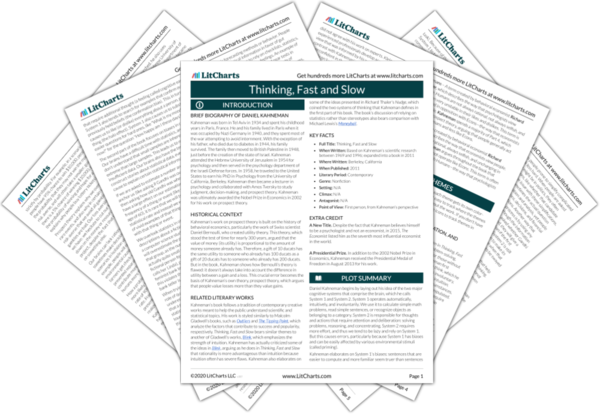Next
Summary
Thinking, Fast and Slow Study Guide |
Next
Summary
|
Welcome to the LitCharts study guide on Daniel Kahneman's Thinking, Fast and Slow. Created by the original team behind SparkNotes, LitCharts are the world's best literature guides.

A New Title. Despite the fact that Kahneman believes himself to be a psychologist and not an economist, in 2015, The Economist listed him as the seventh most influential economist in the world.
A Presidential Prize. In addition to the 2002 Nobel Prize in Economics, Kahneman received the Presidential Medal of Freedom in August 2013 for his work.